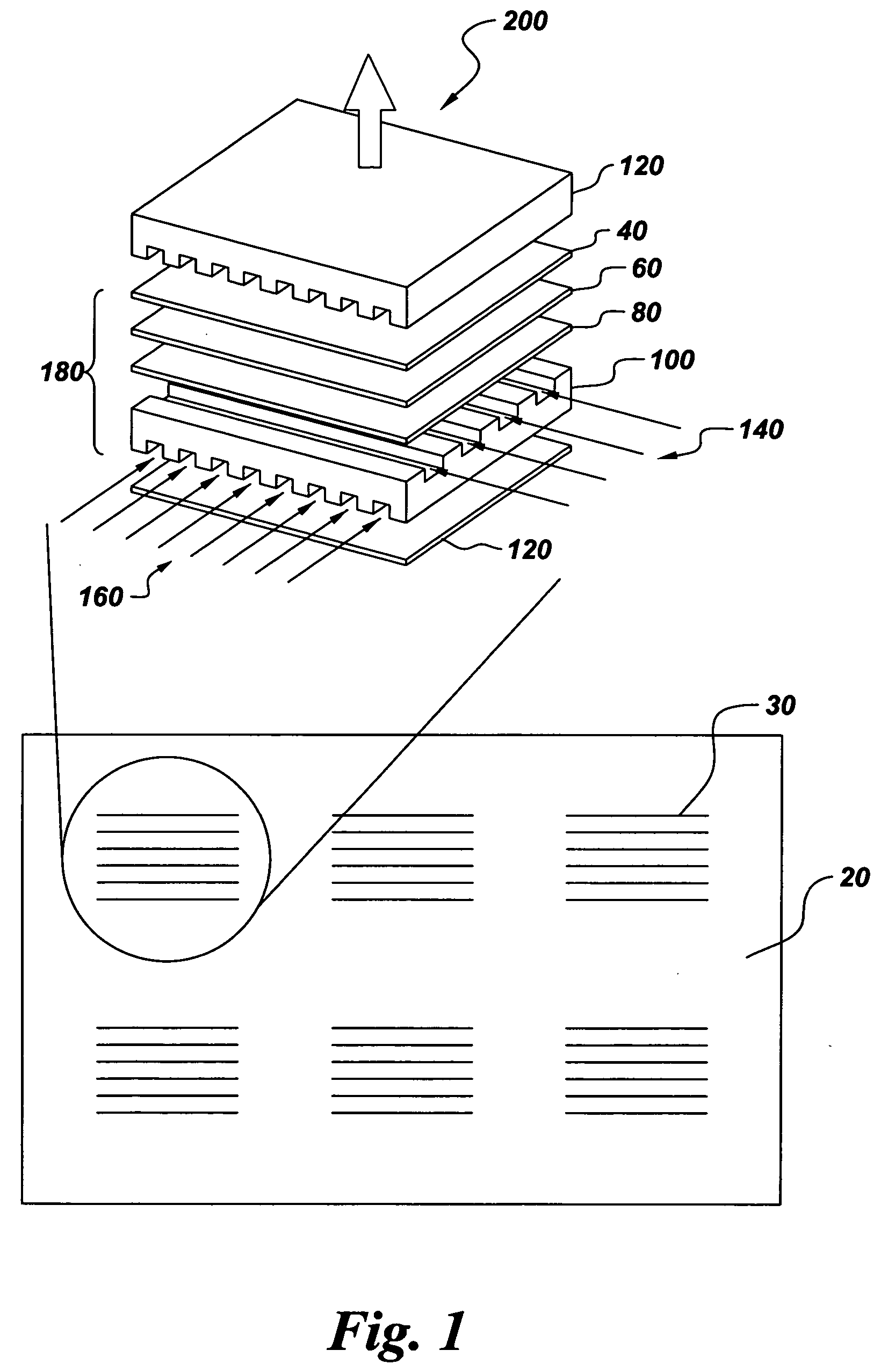Prevention of chromia-induced cathode poisoning in solid oxide fuel cells (SOFC)
- Summary
- Abstract
- Description
- Claims
- Application Information
AI Technical Summary
Benefits of technology
Problems solved by technology
Method used
Image
Examples
third embodiment
[0041] In the present invention, a solid oxide fuel cell system 20 is disclosed. The said solid oxide fuel cell system 20 comprises at least one fuel cell 30 having at least one oxidant inlet 145; a moisture removal system 220 in flow communication with said at least one oxidant inlet 145 to remove moisture 240 from an oxidant 140 provided to said oxidant inlet 140; an anode 40; a cathode 80 and an electrolyte 60.
fourth embodiment
[0042] In the present invention a method for removing moisture 240 in a fuel cell system 20 is disclosed. The method comprises connecting the moisture removal system 220 to the fuel cell 30, allowing exchange of heat between moisture 100 and drying species (or desiccant 460), allowing sufficient dwell time between the drying species and moisture 240, conveying dry cathode feed gas 145 into the fuel cell 30 and regenerating the moisture removing elements (or desiccant 460) using hot air 480 along at least one hot air inlet 420.
[0043] In all embodiments, the claimed invention minimizes the energy penalty associated with drying the inlet oxidant.
PUM
 Login to View More
Login to View More Abstract
Description
Claims
Application Information
 Login to View More
Login to View More - R&D
- Intellectual Property
- Life Sciences
- Materials
- Tech Scout
- Unparalleled Data Quality
- Higher Quality Content
- 60% Fewer Hallucinations
Browse by: Latest US Patents, China's latest patents, Technical Efficacy Thesaurus, Application Domain, Technology Topic, Popular Technical Reports.
© 2025 PatSnap. All rights reserved.Legal|Privacy policy|Modern Slavery Act Transparency Statement|Sitemap|About US| Contact US: help@patsnap.com



